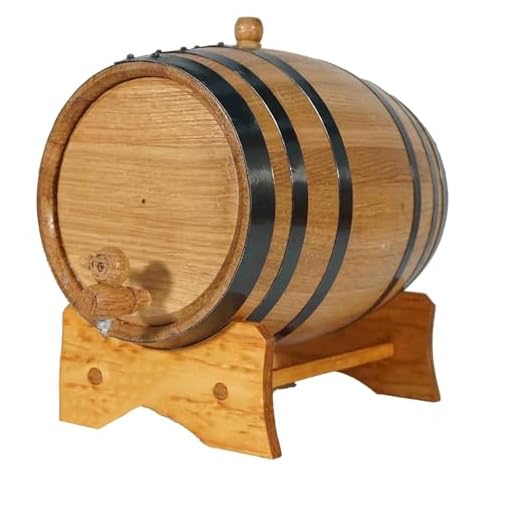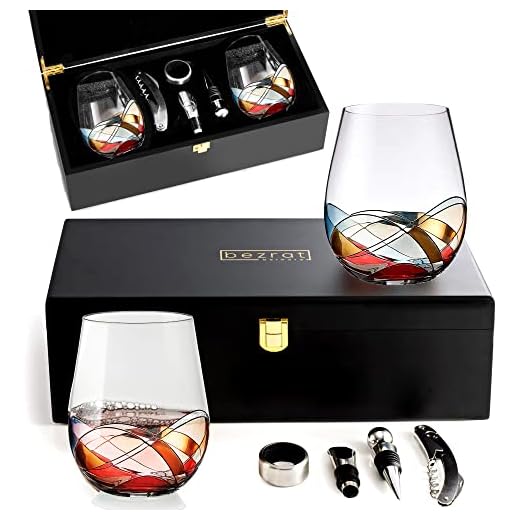



For those curious about the nature of this particular grape-based beverage, the answer is straightforward: it is classified as a pale variety. This type is renowned for its diverse flavor profile, ranging from crisp apple and citrus to rich buttery notes, depending on the region and production methods. If you’re seeking something light and refreshing, this option is a perfect choice.
Originating from the Burgundy region of France, this varietal has gained global popularity. It thrives in various climates, adapting well to both cooler and warmer conditions. As a result, you can find it produced in many countries, each imparting its unique characteristics. Look for bottles from California or Australia for a fruit-forward experience, while those from France may offer a more nuanced and mineral-driven profile.
When considering food pairings, opt for seafood, poultry, or creamy dishes to complement the nuanced flavors of this drink. The versatility of this beverage makes it an excellent companion for various cuisines. Whether you’re hosting a dinner party or enjoying a casual meal, this pale option is sure to enhance your dining experience.
Is Chardonnay Wine Red or White?
This varietal is unmistakably classified as a pale-hued offering, frequently characterized by its bright and crisp nature. It’s known for a range of flavors that can include citrus, green apple, and even tropical notes. The absence of dark pigments in the grape skins ensures its light coloration, making it a preferred choice for those who enjoy refreshing beverages.
Flavor Profile and Pairing Suggestions
The flavor spectrum of this beverage varies depending on the region of cultivation and the vinification techniques used. For instance, cooler climates often yield a more mineral-driven profile, while warmer areas can produce richer, fruit-forward expressions. When it comes to food pairings, this particular type harmonizes beautifully with seafood, poultry, and creamy dishes, enhancing the overall dining experience.
Conclusion
In summary, this varietal is definitively a light-colored selection, known for its versatility and ability to complement a variety of dishes. Its broad appeal and range of styles make it a staple on many wine lists and at dinner tables worldwide.
Understanding Chardonnay Characteristics
This grape variety is renowned for its versatility, producing a range of styles influenced by terroir and winemaking techniques. The flavor profile typically features notes of apple, pear, and citrus, often complemented by hints of tropical fruits like pineapple and mango. In cooler climates, expect more mineral and green fruit characteristics, while warmer regions tend to yield riper, fruit-forward expressions.
Texture and Acidity
The mouthfeel can vary significantly; some bottles exhibit a creamy, buttery texture, often from malolactic fermentation, while others maintain a crisp, refreshing quality. Acidity levels generally range from moderate to high, contributing to the balance and aging potential of the beverage. Look for those with bright acidity for pairing with seafood or dishes featuring rich sauces.
Oaking and Aging Potential
Oaking plays a pivotal role in shaping the final product. New oak barrels impart vanilla, spice, and toast notes, enhancing complexity. Some producers opt for stainless steel to preserve purity and freshness. Age-worthy selections can develop additional layers of flavor, including nutty and oxidative characteristics, making them intriguing choices for collectors.
Differences Between Red and White Varietals
The most significant distinction lies in the grape skins. The skins of the darker fruit are left in contact with the juice during fermentation, resulting in a rich color and tannic structure. In contrast, the paler options are typically pressed immediately, leading to a lighter hue and a different taste profile.
Tannins and Acidity
Another key difference is tannin content. The darker varieties generally have higher tannins, contributing to a bolder mouthfeel. This characteristic can enhance the aging potential, allowing for more complex flavors to develop over time. The lighter counterparts typically exhibit higher acidity, which can impart a crisp and refreshing quality, making them more approachable for immediate consumption.
Aromas and Flavor Profiles
The aromatic profiles also vary significantly. The darker options tend to present notes of dark fruits, spices, and earthy undertones. On the other hand, the lighter varieties often showcase floral aromas, citrus, and stone fruit characteristics. These differences can profoundly influence food pairings, with heavier foods often suited to the darker varietals, while lighter dishes complement the paler selections.
Understanding these distinctions enhances appreciation for each type and helps in selecting the right bottle for any occasion.
Chardonnay’s Color and How It’s Made
This grape variety produces a light yellow hue, distinguishing it from darker varietals. The color can vary slightly based on the vinification process and aging techniques employed. For instance, fermentation in oak barrels can impart a richer, golden tone, while stainless steel fermentation often results in a more crisp and pale appearance.
Production Techniques
The journey begins in the vineyard, where the grapes are harvested at optimal ripeness. After harvesting, they undergo pressing to extract the juice. This juice can be fermented with the skins for a short period, which influences both flavor and color. However, for a true expression of this grape’s character, the skins are typically removed early in the process.
Aging and Influence on Color
Aging plays a significant role in developing the final appearance. Techniques such as malolactic fermentation soften acidity, while barrel aging contributes to a deeper color and complex flavors. The choice of barrel, along with the duration of aging, will affect not only the taste but also the visual appeal of the final product. The result is a spectrum of shades that can range from pale straw to deeper golden tones.
For those looking to enhance their culinary skills while enjoying a glass, check out this guide on how to cook a baked potato fast for a delightful pairing experience.
Common Misconceptions About Chardonnay
One prevalent misconception is that all varieties of this grape produce a single style or flavor profile. In reality, the characteristics vary significantly based on factors like the region, climate, and winemaking techniques. For example, a cooler climate often yields a crisper, more mineral-driven product, while warmer regions can produce more tropical fruit flavors.
Another misunderstanding is that all iterations are heavily oaked. While oak aging can add complexity and richness, many producers opt for stainless steel fermentation to highlight the grape’s natural brightness. This choice leads to a cleaner, more refreshing experience that contrasts starkly with the buttery, oaky stereotype.
Misbeliefs About Sweetness and Acidity
Many people assume that this varietal is always sweet. However, the spectrum ranges from bone-dry to off-dry, depending largely on the fermentation process and residual sugar levels. This diversity allows for a wide array of pairings, from seafood to creamy pasta dishes.
Additionally, there’s a common belief that all expressions are low in acidity. On the contrary, some examples possess vibrant acidity, providing a refreshing lift that complements various foods. Understanding these nuances can elevate your tasting experience tremendously.
Food Pairings for Chardonnay Wines
Seafood, particularly buttery dishes such as lobster or scallops, pairs beautifully. The richness of these dishes complements the creamy texture often found in this varietal.
Poultry, especially roasted chicken with herbs or lemon, provides a delightful contrast. The wine’s acidity cuts through the fat, enhancing the flavors of the dish.
For vegetarian options, consider mushroom risotto or creamy pasta. The earthy flavors of mushrooms paired with the wine’s fruitiness create a harmonious balance.
Cheese lovers should opt for soft cheeses like Brie or Camembert. The creamy profiles of these cheeses align perfectly with the smooth characteristics of the drink.
For a unique twist, try pairing with Thai or Indian dishes that have coconut milk or creamy sauces. The fruit notes can enhance the spices while the acidity refreshes the palate.
- Lobster with drawn butter
- Roasted chicken with herbs
- Mushroom risotto
- Brie or Camembert cheese
- Thai yellow curry with coconut milk
Experimenting with different flavors can lead to delightful discoveries. The key is to balance richness with acidity, allowing both the food and beverage to shine.
Regions Known for Chardonnay Production
California stands out as a premier area for this varietal, particularly in regions like Napa Valley and Sonoma County. The warm climate here allows for full ripening, resulting in wines with rich fruit flavors and buttery textures.
- Napa Valley: Renowned for its luxurious and opulent expressions, often aged in oak.
- Sonoma County: Offers a diverse range of styles from cooler coastal regions to warmer inland areas, producing both crisp and creamy profiles.
France is the historical heart of this grape, especially in Burgundy, where it thrives in the limestone-rich soils. The sub-regions such as Chablis and Côte de Beaune are particularly famous.
- Chablis: Known for its steely, mineral-driven wines with high acidity.
- Côte de Beaune: Produces richer, more complex versions, often with notes of stone fruits and oak.
Australia has gained recognition for its unique takes, notably in regions like Margaret River and the Adelaide Hills, where cooler climates contribute to balanced acidity and vibrant fruit flavors.
- Margaret River: Characterized by tropical fruit notes and a creamy mouthfeel.
- Adelaide Hills: Known for producing elegant and fresh offerings with high acidity.
New Zealand, particularly in regions like Marlborough and Central Otago, is making strides with expressive and zesty renditions that often display citrus and stone fruit characteristics.
- Marlborough: Delivers bright and aromatic wines, with lively acidity.
- Central Otago: Produces fuller-bodied, fruit-forward styles with a touch of minerality.
In the United States, regions like Oregon’s Willamette Valley also deserve mention for their cool-climate versions, which highlight the grape’s versatility and ability to reflect terroir.
- Willamette Valley: Known for producing elegant wines with a focus on balance and finesse.
Exploring these regions offers a diverse palette of flavors and styles, showcasing the adaptability of this grape across different climates and soils.
How to Taste and Evaluate Chardonnay
Start by using a clean, clear glass to appreciate the color. Observe the hue, which can range from pale straw to deep gold. Swirl the glass gently to release aromas, allowing air to interact with the liquid.
Next, take a moment to inhale the scents. Look for notes such as green apple, pear, citrus, or tropical fruits. You may also detect hints of butter, vanilla, or toast, depending on the aging process. Note the intensity and complexity of the aromas.
For the tasting, take a small sip and let it coat your palate. Pay attention to the acidity, sweetness, and body. A higher acidity often indicates a fresher profile, while a fuller body might suggest oak aging. Assess the flavor profile for nuances like minerality or creaminess.
After swallowing, consider the finish. A prolonged aftertaste can indicate quality. Ask yourself if the flavors linger and evolve or if they fade quickly.
| Aspect | What to Look For |
|---|---|
| Color | Pale straw to deep gold |
| Aroma | Fruits, butter, vanilla, toast |
| Taste | Acidity, sweetness, body |
| Finish | Length and complexity of aftertaste |
Finally, compare your impressions with known profiles from various regions. This practice sharpens your evaluation skills and deepens your understanding of this varietal’s diverse expressions.










